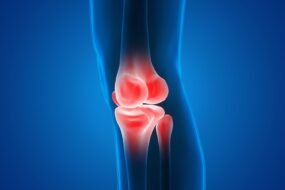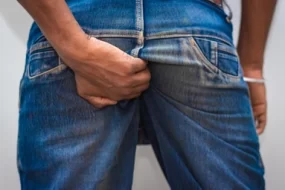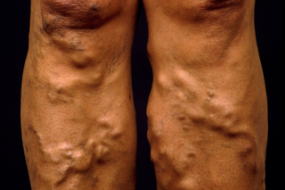
A wound is a disruption in the integrity of skin or tissues. It may be associated with disruption of structure and function. Wounds can be a result of trauma, surgical procedures, or animal bites.
Classification of wounds
Wounds can be classified in many ways. Some examples include
- Acute wound and Chronic wounds
Acute wound-any wound that heals by primary intention. This is a wound that is expected to progress through all phases of normal wound healing.
Chronic wound-a wound that fails to progress healing or respond to treatment over the normal expected healing frame (4 weeks) and becomes arrested in the inflammatory phase
- Tidy and untidy wounds
Tidy wounds -They include wounds like surgical incisions and wounds caused by sharp objects. They are incised, clean with healthy tissues, and rarely cause tissue loss.
Untidy wounds-they are contaminated due to crushing, Tearing, and Avulsion. Often contain devitalized tissues. There may be tissue loss and vascular injuries.
Wound healing
Wound healing is the body’s complex and dynamic mechanism to restore the integrity of the injured part. Normal wound healing occurs in different phases, which include
- The inflammatory phase;
- The proliferative phase;
- The remodeling phase (maturing phase).
Inflammatory phase
- Begins immediately after wounding. It lasts 2-3 days
- Bleeding is followed by vasoconstriction and thrombus formation. This limits blood loss. Thrombus formation mediated by platelets
- Following cessation of bleeding, platelets release cytokines from their alpha granules. They include; -Platelet-derived growth factor (PDGF) ,Platelet factor IV, transforming growth factor beta (TGFβ).
- These cytokines aid in attracting inflammatory cells to the site of injury (polymorph nuclear lymphocytes and macrophages)
- Furthermore, platelets also release vasoactive amines such as histamine, serotonin, and prostaglandins which aid in increasing vascular permeability hence facilitating infiltration of the inflammatory cells.
- The function of macrophages is to remove devitalized tissue and destroy microorganisms as well as regulate fibroblast activity in the proliferative phase.
- During this phase, the structural support of cells is provided by fibrin derived from fibrinogen.
- Inflammatory phase has four elements redness (rubor), swelling(tumour), heat(calor), pain(dolour)
Proliferative phase
- Lasts from day 3 to week 3. Mainly of fibroblast activity producing collagen and ground substance and angiogenesis
- This phase requires vitamin C, especially in collagen formation
- In the early stages, wound tissue formed is granulation tissue (granulation tissue is a contractile tissue characterized histologically by the presence of fibroblasts, keratinocytes, endothelial cells, new thin-walled capillaries, and inflammatory cell infiltration of the extracellular matrix)
- This phase also consists of the deposition of collagen type III in a random fashion contributing to increased tensile strength.
Maturation (remodeling) phase
- After week 3. It can last for years.
- Characterized by the maturation of collagen.
- Collagen type III is replaced with collagen type I till a ratio of 4:1 is achieved
- Collagen nicely arranged along the lines of tension
- There is decreased wound vascularity and wound contraction due to fibroblast myofibroblast activity.
Factors influencing wound healing
Can be classified into
Local factors
Site of wound-wounds over the joints tend to heal poorly
Contamination on the wound for instance, foreign bodies and bacteria
Blood supply at the region-poor blood supply due to vascular insufficiency impairs wound healing
Underlying diseases, for instance, malignancies, and osteomyelitis, tend to impair wound healing
Recurrent trauma on the wound site tends to impair wound healing
Mechanism of wound injury-whether incision, crush, or avulsion. Incision wounds heal faster than crush wounds
Previous radiation
Large defects with poor apposition may have slow wound healing
Systemic factors
Malnutrition-impairs wound healing
Vitamin deficiency-especially vitamin c which is required for the proliferative phase. Vitamin c deficiencies impair wound healing.
Medications, for instance, prolonged use of corticosteroids slow down wound healing.
Diseases such as diabetes mellitus, which impair micro and macrovascular circulation, impair wound healing.
Immune deficiencies, for example, chemotherapy-associated and aids, slows down the process of wound healing.
Smoking- impairs wound healing.
Types of wound healing
- Healing by primary intention
Here wound edges are opposed together using sutures. The aim is to minimize the inflammatory and proliferative phases. There is normal healing with minimal scar formation.
- Healing by secondary intention
Here the wound is left open and heals by granulation, contraction, and epithelization.
There is increased inflammation and scar formation.
- Healing by tertiary intention
Also called delayed primary intention.
The wound is initially left open and edges are later opposed when healing conditions are favorable.
General Measures in the Management of Wounds
Depending on the circumstance under the wound injury occurred, if trauma, the medical practitioner should remember Advanced Trauma life support (ATLS) protocols in management. The stability of the patient is a priority.
Management is multi-disciplinary
An acute wound
A thorough examination of the patient is key to avoiding missed injuries that can kill the patient rather than the wound. Management of wounds requires strict aseptic conditions to minimize infection of the wound.
- If the wound is actively bleeding, pressure over the wound to stop bleeding. Some wounds for instance on the limbs, a tourniquet can be used to stop the bleeding
- In order to facilitate examination, adequate analgesia and/or anaesthesia (local, regional or general) are required.
- Wound inspected and classified as per the type.
- After the assessment, wound debridement to remove devitalized tissue, and foreign bodies. The wound should be debrided to the limit of blood staining
- Thorough cleaning of the wound by irrigating with copious amounts of normal saline
- If an incised wound-primary suturing can be done for the wound to heal with primary intention done under aseptic conditions
- Deep devitalized wounds after debridement are left to granulate, after which a decision to do delayed repair can be made. Very small defects can be sutured. Large defects will require grafts or flaps.
- In a tidy wound, vascular or nerve and tendon injuries can be repaired
- Dressing of the wound with an appropriate dressing material
- Administration of antibiotics to cover for infection.
- Covering for tetanus administration of tetanus toxoid
- Ensuring adequate nutrition-protein rich diet, vitamin C and E to promote an efficient wound healing process
- Advising the patient on cessation of smoking as smoking can impair wound healing
Wound assessment
When examining a wound, it is important to take into account the following considerations as they guide the management plan
- Type of wound-whether acute or chronic
- Site of the wound
- Etiology of the wound-whether surgical, laceration, burn, trauma etc.
- Wound dimensions-involve the size, depth
- Shape of the wound
- Skin surrounding the wound
- State of the Wound bed/surface-whether granulating, epitheliasing, sloughy or necrotic
- Pain
- Wound edges-
- Color. New tissue growth indicated by pink. Erythema may indicate inflammation or cellulitis
- Evidence of wound contraction
- Changes in sensation
- Presence of exudate
- Presence of infection
Complications arising from wound healing phases
Scar formation
As a consequence of the maturation phase of wound healing
Can be defined as
Atrophic
Pale, flat and stretched in appearance, often appearing on the back and areas of tension.
Hypertrophic
Excessive scar tissue that does not extend beyond the boundary of the original incision or
It results from a prolonged inflammatory phase of the wound. Tend to improve spontaneously with time as opposed to keloids
Keloid
Excessive scar tissue that extends beyond the boundaries of the original incision or wound
Keloids and hypertrophic scars tend to be significant problem in terms of cosmesis.
Management of hypertrophic and keloid scars
- Pressure – local moulds or elasticated garments
- Silicone gel sheeting mechanism unknown
- Intralesional steroid injection – involves the administration of triamcinolone
- Excision and steroid injection-of note is that keloid excision has high recurrence rates
- Excision and postoperative radiation (external beam or
- brachytherapy) –keloid excision has high recurrence rates
- Intralesional excision (keloids only)
- Laser – to reduce redness (which may resolve in any event)
- Vitamin E or palm oil massage-mechanism unproven
Contractures
Occurs where scars cross joints or flexion creases form a tight web restricting the range of movement at the joint.
This may cause hyperextension or hyperflexion deformity.
Treatment may be
- simple involving multiple Z-plasties to release the contracture or
- more complex requiring the inset of grafts or flaps.
Splintage and intensive physiotherapy are often required postoperatively
Chronicity of a wound
Impaired normal healing of a wound can convert an acute wound to a chronic wound












